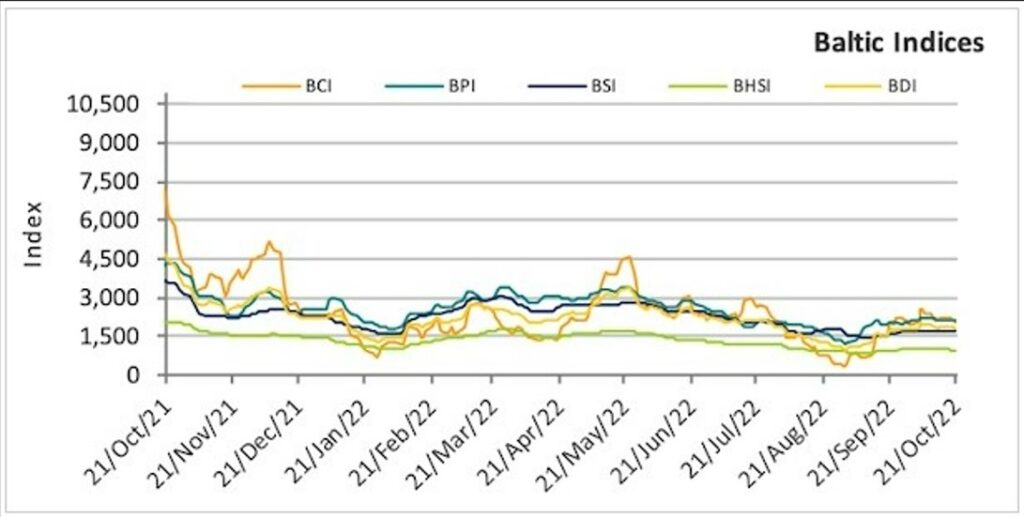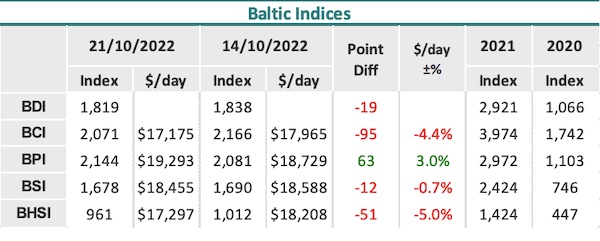Despite the latest developments regarding Russia’s pulling out from the UN grain deal, it seems that the seaborne grain trade’s fundamentals are favorable for ship owners. In its latest weekly report, shipbroker Intermodal said that “global grain trade is extremely tight, facing headwinds from the ongoing war in Ukraine, US river woes, parched fields in Argentina, an unfolding world food crisis, and fears over a global recession.
However, considering the current snapshot of the grain market, one should not ignore that although the outlook is rather gloomy, there are some positive indicators that underpin or could provide some relief to the grain market”.
According to Intermodal’s Research Analyst, Ms. Chara Georgousi, “Europe anticipates the smallest corn crop since 2007-08 with production forecast down 21% y-o-y. Europe’s demand for imported corn has been surging over a poor crop, thus, boosting imports not only from Brazil but also from Ukraine via the Black Sea corridor where uncertainty remains over its continuation. Following USDA’s monthly report, US corn production has been hit by poorer yields, while low water levels in the Mississippi will delay US corn from reaching the export terminals. US soybean production and exports, albeit slightly reduced, are heading towards a record haul. In Argentina, the planting pace is suffering amid drought caused by La Nina, in what could be the third consecutive year of losses for the country”.
“Poor production prospects for 2022-23 and increased competition from the Black Sea and Canada should ensure lost market share and diminished exports in 2022-23. Canadian 2022-23 wheat production is forecast at 33.5m tons, buoyed by recent rainfalls which have improved soil moisture, while exports are estimated at 24m tons, +53.85% y-o-y, underpinned by favorable weather conditions. A gradual return to a regular export pace during 2022-23 could, however, could trigger rail congestion and logistical issues, as rail capacity becomes extremely scarce following the harvest season. Ukraine’s shipments are still 36% lower y-o-y. The grain export outlook for Ukraine is in sharp focus these days, as it is due to expire in mid-November. Officials are amid negotiations to extend it. If that fails, Ukrainian sales could be stymied again during the war. Meanwhile, Asian buyers seek Australian wheat amid fears of grain corridor closure. Conab’s report forecasts a record Brazilian soybean crop of 152.4m tons for 2022-23, +21% y-o-y. Last year’s crop was the second largest crop ever despite drought issues. The record crops come as traders mull over the weaker state of US export demand due in part to an elevated dollar. Soybean exports are seen at 95.87m tons next year, +22.5% y-o-y, amid higher supplies, surging demand and an expected drop in US shipments in 2022-23”, Intermodal’s analyst said.
Ms. Georgousi said that “China may start importing corn from Brazil as early as December, amid efforts to reduce dependence on the US and replace supplies from Ukraine. While Brazil is the 2nd biggest corn exporter, China almost never bought from the country in the past 9 years due to phytosanitary concerns. The move threatens the US share of Chinese purchases. Estimates for Russia’s wheat crop have surged to a massive crop of 100m tons, amid favorable growing conditions during the summer. A recent drop in the country’s wheat export prices paired with a reduction of wheat export duty are expected to turn Russian wheat more competitive than other origins, meaning that exports could likely resume. Conclusively, following several months of a fertilizer crisis, a bullish combination of falling gas prices in Europe and swelling global fertilizer inventories is expected to tame prices and boost global demand. Exports are, also, expected to ramp up, at least partially”.
“Overall, a strong US soybean crop paired with a record Brazilian harvest will provide some tailwinds to the global grain outlook. In terms of demand, we should see an increase in accordance with population growth, yet supply is projected to be tight. According to USDA, grain production is set to slip to 36m tons, -1.3% y-o-y, in the 2022-23 marketing year. In the meantime, as uncertainty hovers over the Black Sea corridor, we should expect a shift in the global grain trade in the following marketing year, given the disruptions continue”, Intermodal’s analyst concluded.
Nikos Roussanoglou, Hellenic Shipping News Worldwide



